Yohann Perron
Towards Robust and Generalizable Lensless Imaging with Modular Learned Reconstruction
Feb 03, 2025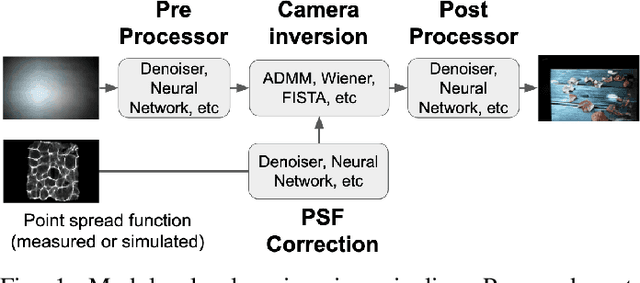
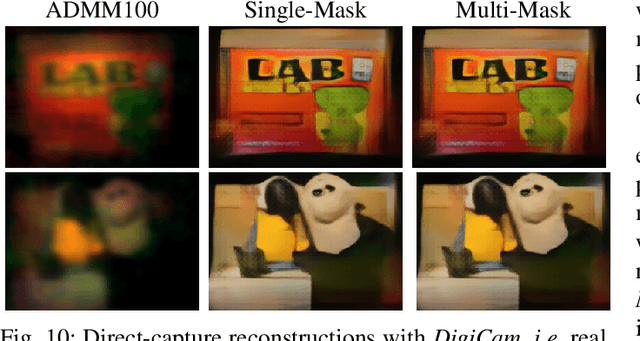
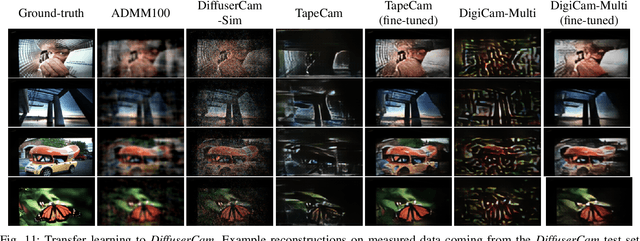
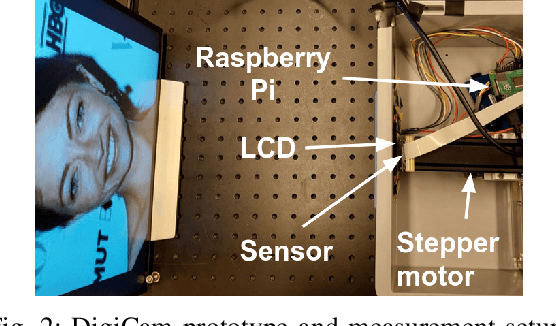
Abstract:Lensless cameras disregard the conventional design that imaging should mimic the human eye. This is done by replacing the lens with a thin mask, and moving image formation to the digital post-processing. State-of-the-art lensless imaging techniques use learned approaches that combine physical modeling and neural networks. However, these approaches make simplifying modeling assumptions for ease of calibration and computation. Moreover, the generalizability of learned approaches to lensless measurements of new masks has not been studied. To this end, we utilize a modular learned reconstruction in which a key component is a pre-processor prior to image recovery. We theoretically demonstrate the pre-processor's necessity for standard image recovery techniques (Wiener filtering and iterative algorithms), and through extensive experiments show its effectiveness for multiple lensless imaging approaches and across datasets of different mask types (amplitude and phase). We also perform the first generalization benchmark across mask types to evaluate how well reconstructions trained with one system generalize to others. Our modular reconstruction enables us to use pre-trained components and transfer learning on new systems to cut down weeks of tedious measurements and training. As part of our work, we open-source four datasets, and software for measuring datasets and for training our modular reconstruction.
Archaeoscape: Bringing Aerial Laser Scanning Archaeology to the Deep Learning Era
Dec 06, 2024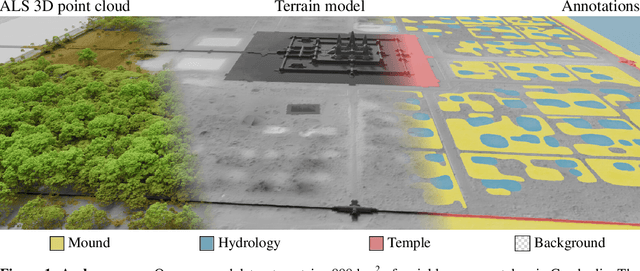
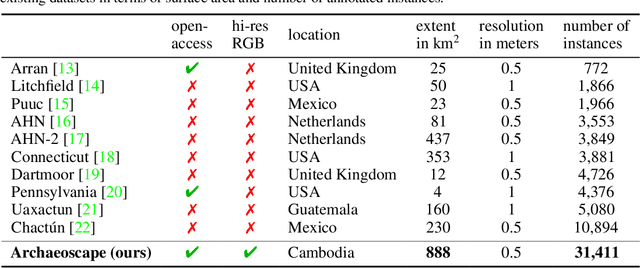
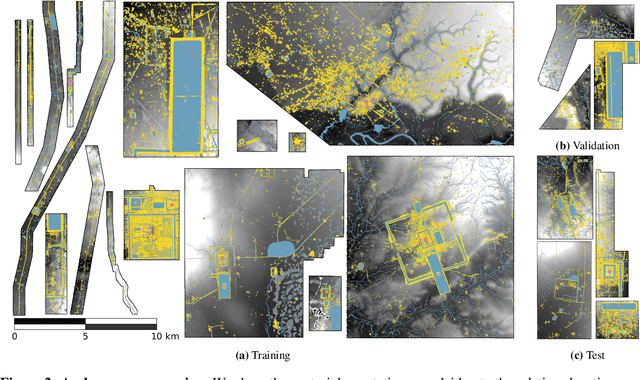
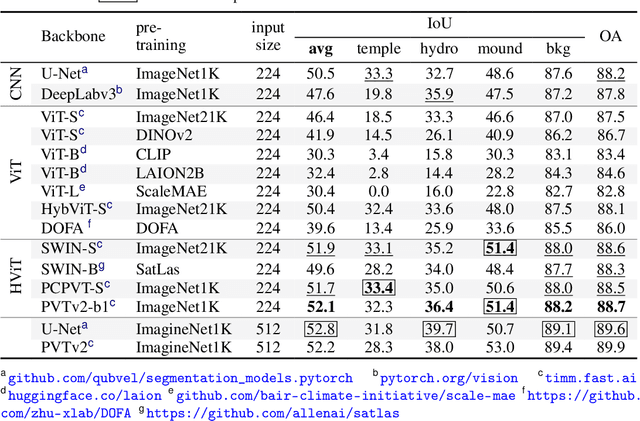
Abstract:Airborne Laser Scanning (ALS) technology has transformed modern archaeology by unveiling hidden landscapes beneath dense vegetation. However, the lack of expert-annotated, open-access resources has hindered the analysis of ALS data using advanced deep learning techniques. We address this limitation with Archaeoscape (available at https://archaeoscape.ai), a novel large-scale archaeological ALS dataset spanning 888 km$^2$ in Cambodia with 31,141 annotated archaeological features from the Angkorian period. Archaeoscape is over four times larger than comparable datasets, and the first ALS archaeology resource with open-access data, annotations, and models. We benchmark several recent segmentation models to demonstrate the benefits of modern vision techniques for this problem and highlight the unique challenges of discovering subtle human-made structures under dense jungle canopies. By making Archaeoscape available in open access, we hope to bridge the gap between traditional archaeology and modern computer vision methods.
Open-Canopy: A Country-Scale Benchmark for Canopy Height Estimation at Very High Resolution
Jul 12, 2024



Abstract:Estimating canopy height and canopy height change at meter resolution from satellite imagery has numerous applications, such as monitoring forest health, logging activities, wood resources, and carbon stocks. However, many existing forest datasets are based on commercial or closed data sources, restricting the reproducibility and evaluation of new approaches. To address this gap, we introduce Open-Canopy, the first open-access and country-scale benchmark for very high resolution (1.5 m) canopy height estimation. Covering more than 87,000 km$^2$ across France, Open-Canopy combines SPOT satellite imagery with high resolution aerial LiDAR data. We also propose Open-Canopy-$\Delta$, the first benchmark for canopy height change detection between two images taken at different years, a particularly challenging task even for recent models. To establish a robust foundation for these benchmarks, we evaluate a comprehensive list of state-of-the-art computer vision models for canopy height estimation. The dataset and associated codes can be accessed at https://github.com/fajwel/Open-Canopy.
A Modular and Robust Physics-Based Approach for Lensless Image Reconstruction
Mar 01, 2024Abstract:In this paper, we present a modular approach for reconstructing lensless measurements. It consists of three components: a newly-proposed pre-processor, a physics-based camera inverter to undo the multiplexing of lensless imaging, and a post-processor. The pre- and post-processors address noise and artifacts unique to lensless imaging before and after camera inversion respectively. By training the three components end-to-end, we obtain a 1.9 dB increase in PSNR and a 14% relative improvement in a perceptual image metric (LPIPS) with respect to previously proposed physics-based methods. We also demonstrate how the proposed pre-processor provides more robustness to input noise, and how an auxiliary loss can improve interpretability.
 Add to Chrome
Add to Chrome Add to Firefox
Add to Firefox Add to Edge
Add to Edge